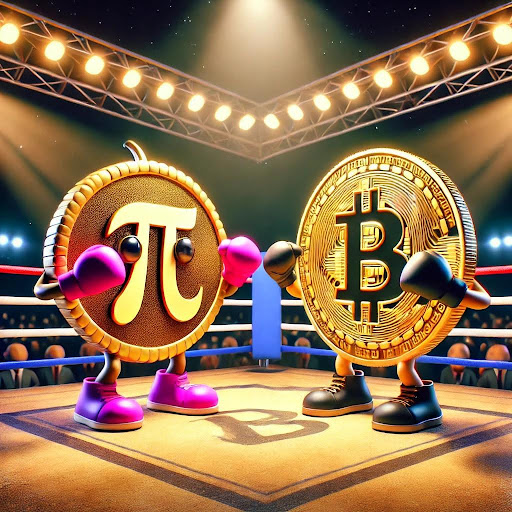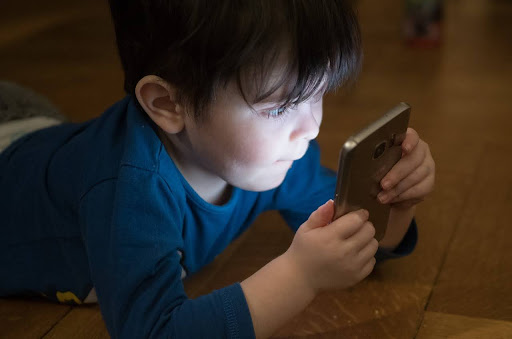While the timeline for Pi Coin’s evolution is testing the patience and faith of its community, is it all going to be worth it in the end?
Pi Network has reportedly grown to over 60 million users (or “Pioneers”) as of 2024, and the numbers keep going up. Thanks to its mobile mining model and user-friendly approach, it’s become one of the largest communities in the cryptocurrency space. That being said, however, the timeline for Pi Coin’s evolution has been slower than many expected, which is testing the patience and faith of its community.
Additionally, early adopters of Pi Coin likely hold tens of thousands of coins because mining rates were much higher at the start, and fewer users meant less competition. For people who joined later, mining has been slower, especially since the rates dropped as the network grew.
You aren’t really mining anything
This disproportionately large number of coins held by early adopters could be a major stumbling block in the future for a number of reasons, the most important of which is that they got them for free. Many Pi Coin holders view their holdings as something they got for free with no investment and no risk, just a few clicks on their phone each day.
Unfortunately, this makes it more likely for them to cash out immediately when the coins become tradable, especially if they perceive the initial price as high relative to their expectations. Many Pi coin miners may feel differently, however, and claim they have earned the coins by mining them and here’s the bad news, you aren’t mining anything.
Pi coin “mobile-phone” mining is purely for entertainment and engagement and has nothing to do with actual block chain mining where you’re solving cryptographic puzzles and contributing to the blockchain’s security. In fact, Pi coin has recently introduced a way to actually mine their coins with a computer and their node software which begs the question: what is everyone mining on their phones then?
The answer is, thin air, they aren’t mining anything, what they’re doing is creating a community of people interested in the coin which is basically what determines the value of every crypto currency. A couple of years ago we posted an article titled “Is Bitcoin backed by anything real?” and in it we explained how it’s the users and technology that inherently set the value of crypto.
The transition to Mainnet
Now if you’ve been mining Pi coins with your phone this doesn’t mean your coins aren’t Pi coins, it just means you were rewarded with them for your participation and haven’t mined them in the traditional sense of the word. If Pi can deliver on its promises, however, that’s not necessarily a bad thing. Pi Network’s “big move” to Mainnet is a (proposed) huge step that could finally make Pi Coins valuable in the real world. Right now, everything stays within the app including mining, transactions, and all other activity.
The shift to Mainnet will change that by connecting Pi to the broader cryptocurrency ecosystem. Users will finally be able to transfer their Pi Coins to external wallets, spend them in real-world transactions, or trade them on exchanges, if Pi gets listed, that is.
Now here’s where it gets interesting, what if they don’t move to Mainnet? While Pi coins can’t be traded yet, the owners seem to have found clever ways to profit from the app. Millions of users reportedly log in weekly to “mine” Pi by pressing a button, all while being served ads. With such a massive user base, ad revenue could be a major income source for Pi Network though ads might only be the tip of the iceberg.
The bigger concern here, of course, is user data. While signing up, users agree to share a whole range of personal information, including browsing history, chat messages, location data, contact lists, and more. Additionally, the new KYC process requires government IDs and selfies, which could make the Pi database a goldmine for data brokers.
The next Bitcoin?

All that personal information for tokens that, legally speaking, are still just like video game points, seems a bit much. The phrase “if something is free, you are the product,” comes to mind, especially since the Pi Network is now serving its users with ads. Think about it, if they do transition to Mainnet, there is always the risk that people will cash out millions of coins immediately, crashing the value and causing people to leave the network.
That would mean no more income from ads or user data. That’s a big incentive to just keep people on the hook for as long as possible or at least till there are measures in place to minimize the impact of a mass cash out.
Those measures could include giving users real incentives to not sell their coins, restricting how many coins can be traded initially, and creating an ecosystem where Pi coins can be spent instead of sold. In conclusion, while the odds of Pi Coin becoming the next Bitcoin are low, it doesn’t need to replace Bitcoin to be successful.
By addressing gaps in the crypto market like accessibility, environmental sustainability, and everyday usability, it’s already attracted millions of users who otherwise probably wouldn’t even bother with crypto. While that’s a hell of a start, they still need to sell their first actual token to be considered in the same league as Bitcoin or Ethereum or any of the other actual crypto currencies out there.
In case you missed:
- Pi Coin vs Bitcoin: Round 2, Mainnet Launch
- The Dirty world of Cryptocurrency trading: A Beginner’s Guide
- Quantum Computers: It’s now 20X easier to crack Bitcoin encryption than we thought!
- PVC Meta Coins: The Next Big Thing in Crypto?
- New Study Proves Gold Grows on Trees: What it means and why India should pay attention!
- Having two left thumbs may no longer be a bad thing
- Omnidirectional VR treadmills, go anywhere without going anywhere!
- Quantum War Tech: DRDO and IIT help India take the lead!
- NVIDIA just dropped “ACE” at CES 2025: Truly intelligent NPCs coming soon!
- This Prosthetic Hand can detach and crawl across the floor. How cool is that?













7 Comments
It’s essential to recognize that not all cryptocurrencies utilize the same mining models. The Pi Network’s approach may differ from conventional models, but it serves a different purpose and audience.
Hello sir, now a crypto currency called PVC Meta has come into the market. Can you tell me anything about it?
Can I understand is PVC Meta a mining coin like Pi ?
This hurt my brain reading, not a pi shill but dang you dont gotta always solve ‘math puzzles’ to ‘mine blockchains’.
It is going to prove that you were wrong and just another hater of something that you are arenot understand ..
Nobody will sell pi for a low price, pi is money. Get ready for a revolution!
Yes. Pi network is A fierce rival for bitcoin